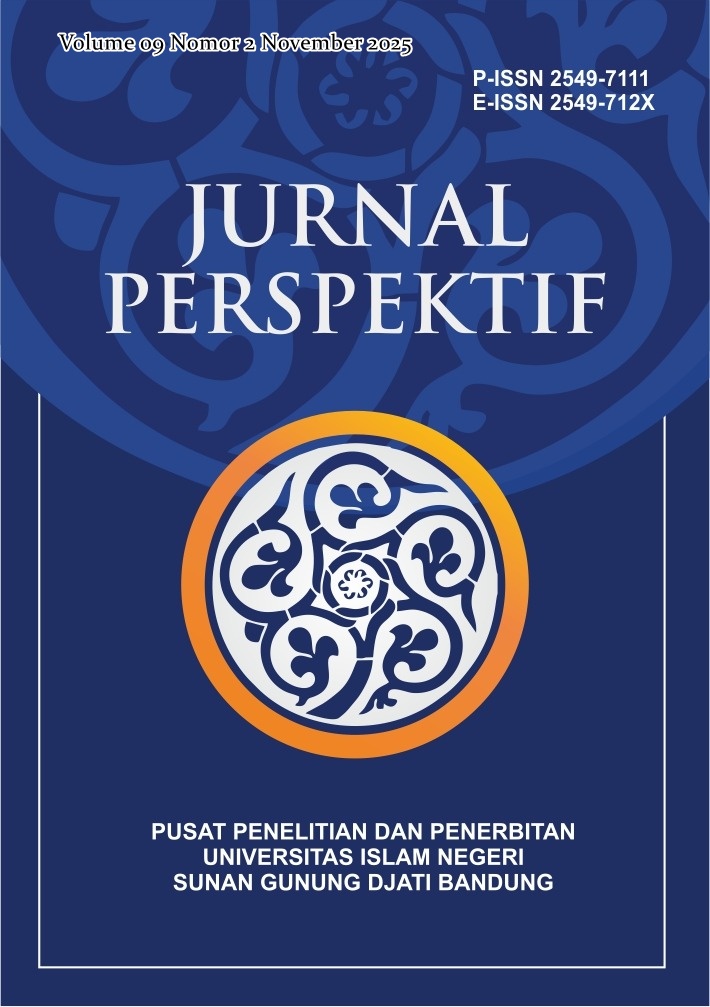Development of Web-Based Mathematics Learning Media to Improve Reasoning Ability and Self-Efficacy of High School Students
DOI:
https://doi.org/10.15575/jp.v9i2.354Keywords:
Development, Reasoning Ability, Self EfficacyAbstract
The purpose of this study was to determine the validity, practicality and effectiveness of web-based mathematics learning media to improve students' reasoning skills and self-efficacy, 1 and improve students' reasoning skills and self-efficacy. This type of research is Thiagarajan's development research, namely the 4-D model. The subjects in this study were 30 students of MAN 1 Medan Class X-18. Research results; The web-based mathematics learning media developed has met the valid and practical criteria in terms of material, appearance, interactivity, and ease of use. This eligibility was obtained based on the results of validation by material experts, media experts, as well as the results of limited trials and extensive trials conducted on students. This learning media has proven effective in improving students' mathematical reasoning skills. This is due to a significant increase in mathematical reasoning ability scores after students used the developed learning media compared to before using the media. The use of web-based mathematics learning media also makes a positive contribution to improving students' reasoning and self-efficacy. Student participants showed increased confidence in their ability to understand and solve mathematical problems.
References
Adzkiya, D. S., & Suryaman, M. (2021). Penggunaan Media Pembelajaran Google Site dalam Pembelajaran Bahasa Inggris Kelas V SD. Educate : Jurnal Teknologi Pendidikan, 6(2), 20–31.
Angelia, C., Voogt, J., Fluck, A., Webb, M., Cox, M., Malyn-Smith, J., & Z. (2016). Computational Thingking Curriculum Framework: Implications For Teacher Knowledge. Educational Technology and Society.
Arends, R. I. (2018). Learning To Teach. Penerjemah: Soetjipto, H.P dan Soetjipto, S.M. Belajar untuk Mengajar. Pustaka Pelajar.
Bandura, A. (1989). Self-efficacy mechanism in physiological activation and health-promoting behavior. In J. Madden, S. Matthysse, & J. Barchas (Eds.), Adaptation, learning and affect. Raven.
Dermawan, Fahmi, R. (2020). Pengembangan E-Modul Berbasis Web Pada Mata Pelajaran Pembuatan Busana Industri. Jurnal Pedagogi Dan Pembelajaran, 3(3), 508–515.
Ertin, Aini, F. (2018). Analisis Kemampuan Representasi Matematis Ditinjau Dari Self Efficacy Siswa Melalui Model Pembelajaran CORE. Universitas Negeri Semarang.
Gaza, dkk. (2018). Analisis kemampuan kemampuan penalaran dan self confidence siswa sma dalam materi peluang. Jurnal Aksioma, 1(1), 14–21.
Hamidah. (2018). Pengaruh Self Efficacy Terhadap Kemampuan Komunikasi Matematik. STKIP Siliwangi Bandung, 2(3), 23.
Harianja, W.J & Panjaitan, A. (2022). Peningkatan Kemampuan Pemecahan Masalah Matematis Siswa Kelas VIII SMP Parulian 1 Medan Melalui Model Pembelajaran Interaktif Setting Kooperatif. Jurnal Fibonaci, 3 (!), 42-51.
Hariyanto. (2018). Penerapan Model CORE Dalam Pembelajaran Matematika Untuk Meningkatkan Kemampuan Komunikasi Matematis Siwa. Jurnal Gammath, 1 (2), 33–40.
Jansen, A., & Rojas, F. (2022). Evaluating the effectiveness of digital technology in language preservation. International Journal of Language Revitalization, 11 (3), 56-70.
Kemendikbud. (2016). Permendikbud Nomor 22 Tahun 2016 tentang Standar Proses Pendidikan Dan Menengah. Kemendikbud.
Khairinal, Suratno, dan Aftiani, R. Y. (2021). Pengembangan Media Pembelajaran E-Book Berbasis Flip Pdf Professional Untuk Meningkatkan Kemandirian Belajar Dan Minat Belajar Siswa Pada Mata Pelajaran Ekonomi Siswa Kelas X IIS 1 SMA Negeri 2 Kota Sungai Penuh. JMPIS, 2 (1), 458 – 470.
Kusuma, Dwi Hendra, S. W. (2015). Pengembangan Media Pembelajaran Video Tutorial Untuk Meningkatkan Hasil Belajar Siswa. Jurnal Pendidikan Bisnis Dan Ekonomi, 1 (1).
Nurullita., Surya, Edy. & Syahputra, E. (2017). The Effect Of Problem Based Learning To Students’ Mathematical Problem Solving Ability. IJARIIE, 3(2), 3441-3446.
Permendikbud RI. (2013). Salinan Lampiran Permendikbud No. 65 Tahun 2013 tentang Standar Proses.
Purnamasari, Y. (2017). Pengaruh model pembelajaran kooperatif tipe teams games tournament (tgt) terhadap kemandirian belajar dan peningkatan kemampuan penalaran dan koneksi matematik peserta didik SMPN 1 kota Tasikmalaya. Jurnal Pendidikan Dan Keguruan UT, 1(2), 21.
Rahmawati, R., Azizah, I. . (2018). Desain Didaktis Berbasis Model Inkuiri Untuk Mengembangkan Kemampuan Pemecahan Masalah Matematis. Jurnal Matematika Dan Pembelajaran, 6 (2).
Sugiyono. (2018). Metodologi Penelitian Pendidikan (Pendidikan Kuantitatif, Kualitatif dan R&D). Alfabeta.
Suhandi, A., & Robi’ah, S. (2022). Implementasi Kurikulum Merdeka dalam Pembelajaran Matematika. Jurnal Inovasi Pendidikan, 14(2), 89-101.
Suhendri, D. & S. (2018). Efek Model Pembelajaran Group Investigation terhadap Hasil Belajar Siswa pada Materi Pokok Kalor Kelas VII Semester I SMP IT AL-FITYAN Medan. Jurnal Online Pendidikan Fisika, 1(1), 70-80.
Sumartini, T. S. (2018). Peningkatan Kemampuan Penalaran Matematis Siswa Melalui Pembelajaran Berbasis Masalah. Jurnal Pendidikan Matematika, 5(1).
Surya, E., dkk. (2013). Improving of Junior High School Visual Thinking Representation Ability in Mathematical Problem Solving by CTL. IndoMS. J.M.E, 4(1)., 113-126.
Wahyudin. (2016). Pembelajaran dan Model-model Pembelajaran. Ipa Abong.
Zulkarnain, I. (2015). Kemampuan Pemecahan Masalah Dan Kemampuan Komunikasi Matematika Siswa. Jurnal Formatif., 5(1).
Downloads
Published
How to Cite
Issue
Section
Citation Check
License
Copyright (c) 2025 Sri Wahyuni 12

This work is licensed under a Creative Commons Attribution-ShareAlike 4.0 International License.
Authors who publish in Jourrnal Perspektif agree to the following terms:- Authors retain copyright and grant the journal right of first publication with the work simultaneously licensed under a Attribution-ShareAlike 4.0 International (CC BY-SA 4.0) License that allows others to share the work with an acknowledgment of the work's authorship and initial publication in this journal.
- Authors are able to enter into separate, additional contractual arrangements for the non-exclusive distribution of the journal's published version of the work (e.g., post it to an institutional repository or publish it in a book), with an acknowledgment of its initial publication in this journal.
- Authors are permitted and encouraged to post their work online (e.g., in institutional repositories or on their website) prior to and during the submission process, as it can lead to productive exchanges, as well as earlier and greater citation of published work (See The Effect of Open Access).



